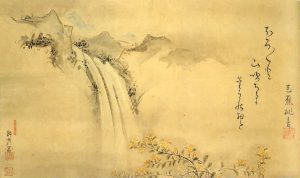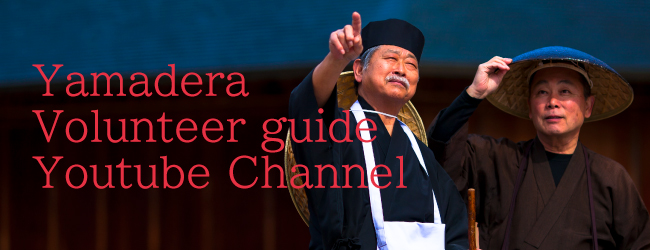Horo horo to (Quietly, Quietly), haiku poem and painting Morikawa Kyoriku, painting; Matsuo Basho, calligraphy Genroku 6 (1693) (Original: Tenri Central Library, Tenri University)

Horo horo to (Quietly, Quietly), haiku poem and painting
Morikawa Kyoriku, painting; Matsuo Basho, calligraphy
Genroku 6 (1693)
(Original: Tenri Central Library, Tenri University)
horo horo to / yamabuki chiru ka / taki no oto
quietly, quietly / yellow mountain roses fall – / sound of the rapids*
This gasan (painting accompanied by a haiku poem) was completed the year before Basho’s death, but the haiku poem itself was written in the spring of 1688, one year before Basho’s Oku no Hosomichi journey. It was composed during the journey recounted in the Oi no Kobumi (“The Records of a Travel-Worn Satchel”) travel narrative, and concerns the great waterfall of Nishiko, located on the upper reaches of the Yoshino River in the Yamato Province (present-day Nara prefecture). The poem paints a picture of the petals of yellow yamabuki mountain roses sent fluttering by the roar of the Yoshino river rapids, although the day itself is windless.
The accompanying ink painting is the work of Morikawa Kyoriku, a samurai of the Hikone Domain (present-day Hikone city, Shiga prefecture) in the Omi Province, who became Basho’s pupil the year before the Horo horo to collaboration. Kyoriku was a skilled artist who instructed Basho in painting, and in this work, his invigorating painting of a waterfall harmonizes with the elegant brushwork of Basho’s later years to produce what is considered to be a masterpiece of haiga painting.
*translation: Makoto Ueda
